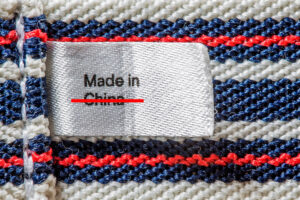Over 100 million people are missing in China!? No, the Chinese aren’t playing the world’s largest game of hide and seek, instead there’s widespread fraud in their data collection system. Yay! Government officials are admitting that they’ve been fudging their population numbers for quite some time, overcounting by at least 100 million (with some private estimates up to 500 million).
This starts from day one. Births often go unregistered, then local officials inflate vaccination and school enrollment numbers to secure funding. And by the time these imaginary people would theoretically enter the workforce, start paying taxes, and provide their first reliable data point to the government…there’s already been two decades of faulty statistics baked into the system. Now, the Chinese have a cohort of 20-somethings that’s over 100 million smaller than initially believed.
The future of China’s demographic stability and workforce is now in question, and there’s no plausible fix. While the US has better systems in place, the recent cuts to data collection under the Trump administration risk sending the US down a similarly dysfunctional path.
Transcript
Hey, all. Peter Zeihan here. Coming to you with a woodshed edition of our daily videos. Today we’re taking a question from the Patreon crowd about China. Specifically, over the last couple of years, the Chinese have steadily revised down their estimates of their total population, with Chinese statisticians, government statisticians regularly opining now that they’ve over counted the population by at least 100 million people.
And a lot of private estimates say that the over count could be as many as a half a billion. And, well, this is not my, projection. I have no way of doing a snout count of the Han Chinese. The question is, you know, how how do you lose that many people?
Really? If you want to sum it up in one word, it’s fraud. Which the Chinese are very good at, especially at the government level. There are certain points in your life where the government becomes aware of your existence. In the United States, that’s when you’re born. That’s when you die. That’s every year when you pay taxes is or when you get a Social Security number, when you get a driver’s license, things like that.
China is not nearly as economically developed as the United States. And government services are not as robust. So there are fewer points where the government becomes aware of your existence. And birth is not one of them. A lot of people in China are still born in either rural hospitals or maybe not in hospitals at all.
The first time the Chinese become aware of you is when a doctor gives you your initial set of vaccinations. That is a census point. The second time they become aware of you is when you show up for your first day of primary school, think kindergarten, and then the next time they become aware of you is not until you pay taxes for the first time, which if you’re going to be blue collar, it’s probably around 16 to 19 and it’s going to be white collar.
That’s probably going to be around 21 to 24. So those three points, well, here’s the issue. The doctors have falsified their documents for the immunization, saying that they’ve given more immunizations than they have because they get paid per shot. And then when you get to primary school, the local governments have lied about how many people have showed up for school because their government subsidies are based on the number of people in their province, and this is the primary method that they have for collecting census data.
So these two first points at, when you’re an infant and roughly age five, the data has been fabricated on a massive scale. And the thing is, the national government in China did not figure this out until their own data didn’t match up. And remember, if you dial back about 25, 30 years ago, that’s when China was in the midst of the early stages of its industrial boom.
Everyone was working in manufacturing, and they had just started in a big way, building out their white collar workforce, starting with their educational system. So since roughly 1992, but really not picking up until roughly the year 2000, the Chinese went very big into white collar training and thinking that they were going to evolve into a services economy. Now, that didn’t work out for them, but that’s a different issue.
Bottom line is they established a system of training, tertiary education, college and grad school where a huge number of people were drawn out of the workforce and stayed in education for two, three, 4 or 5, six more years. And so the Chinese didn’t get their first data point as to how many people they had. The federal government didn’t get their first data point until how many people they had, until these people turned 21 to 24.
Well, if this process started in roughly 2000, they didn’t get their first real data until 2021 to 2024. And that is the window when the Chinese started looking at their data at the national level and realizing it didn’t match up with the data they had been getting for 20, 25 years from the local level, that the number of kids that they’re supposedly born of blacks 20 years actually worked.
And the result is a difference of at least 100 million people. Which means if the Chinese want to fix this problem today, they won’t get more workers for another 25 years. Because first, you have to encourage people to have more kids, and they have to have more kids, and then they have to grow up and
Fixing the statistical system is a little late. That should have been done, you know, 20 years ago, but bygones. Now, the result here is that the Chinese data 25 years out of date, basically grossly overestimated the number of people that they have that are 25 and under. Suggests that the Han ethnicity is, well, to be perfectly blunt.
Do they have not had enough live births to even continue it? And now that they’ve discovered it, basically everyone in China who’s over or under age 40, so roughly 25 to 40, they’d have to basically have five kids if they were going to save the ethnicity this century. It’s that bad at this point. Can’t really fix that with policy.
And for those of you is like, oh, those stupid Chinese. That could never happen here. Well, yes, we have more data points. Things like driver’s license. Yes, we collect better data at the local level because in the United States, local and state authorities have the authority to tax in a way that local governments in China cannot.
So local governments basically just get a big subsidy from the federal government every year here, there’s different stages of income at different stages of government. So the data is much better. But one of the things that the Trump administration is doing with all of its cuts is basically going after statisticians because it’s perceived as something that is kind of a waste.
Now, I personally find that horrific. So we’re not collecting data anymore on disease transfer. We’re not collecting data anymore on energy, inventories. We’re not collecting data anymore on fraud. And we’re not even enforcing white collar fraud laws that are on the books. So we are setting ourselves on a path towards Chinese level statistical dysfunction. There are a lot more safeguards.
There are more points of contact with the population in government than there are in China. The sense of fraud has not become ingrained in society here like it has there, but we are absolutely going the wrong way. Does this mean we’re going to be missing 100 million people in 50 years? I doubt it, but the idea that a government can function if it blinds itself, that’s a bit of a stretch.








